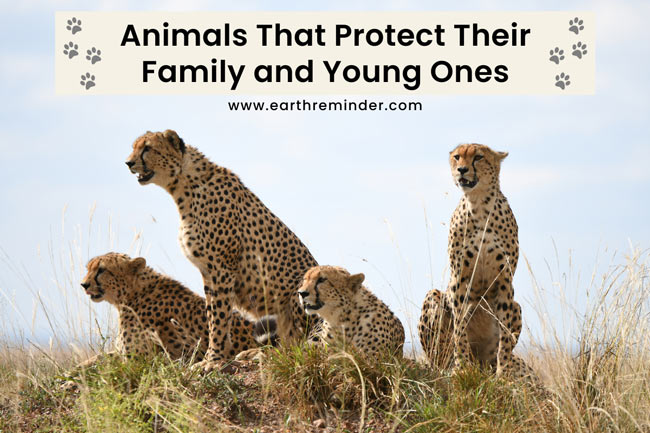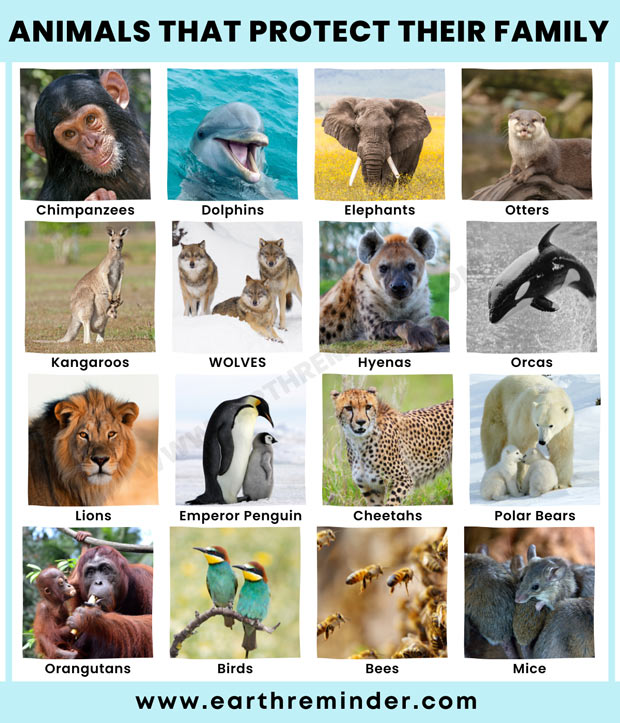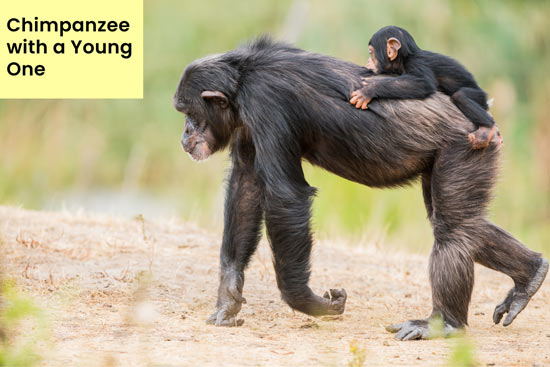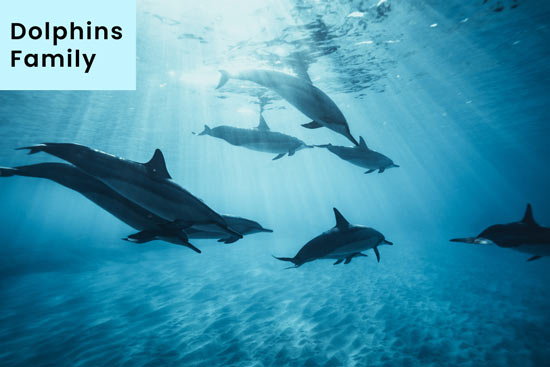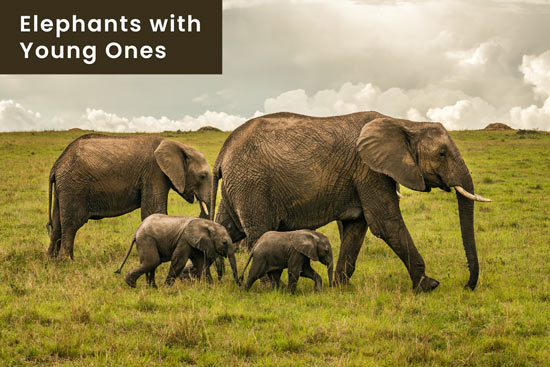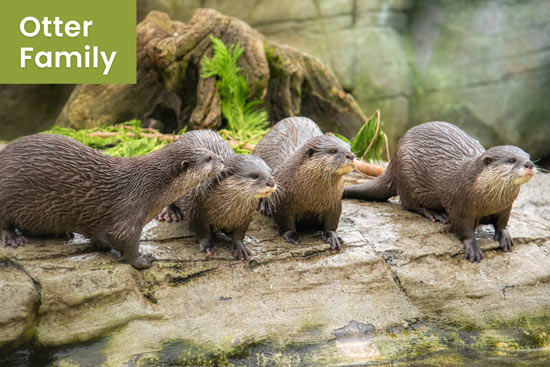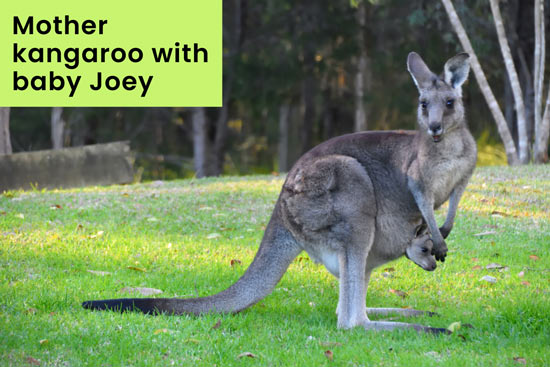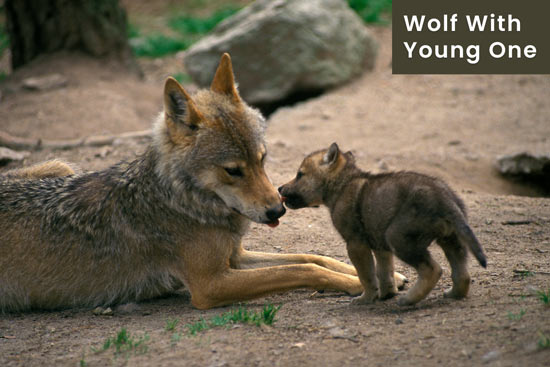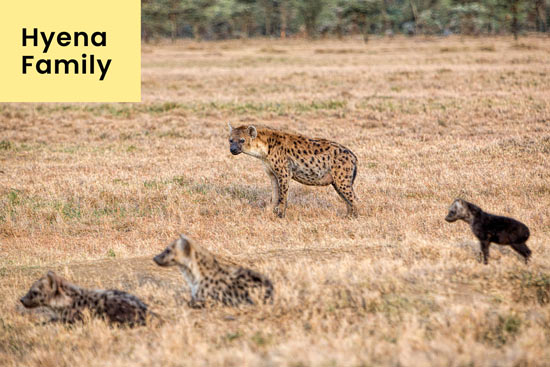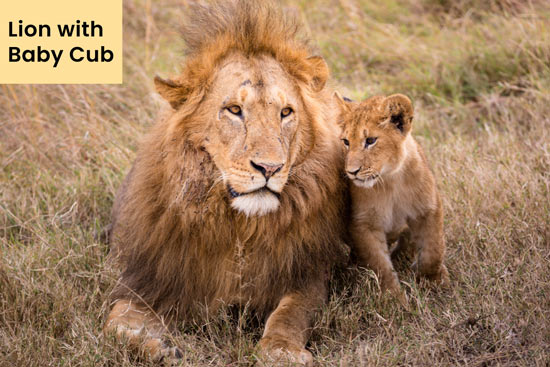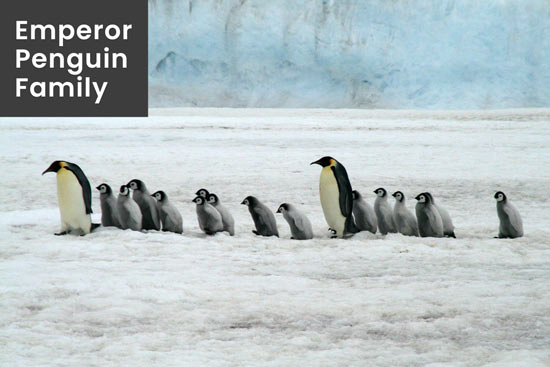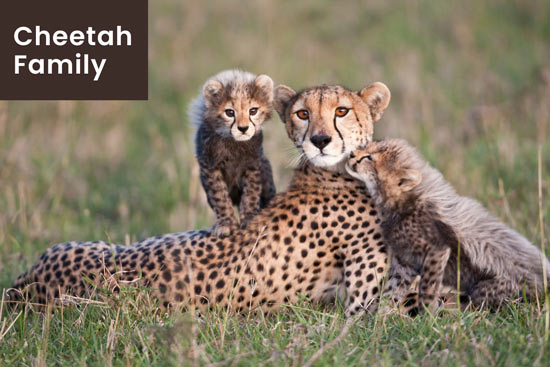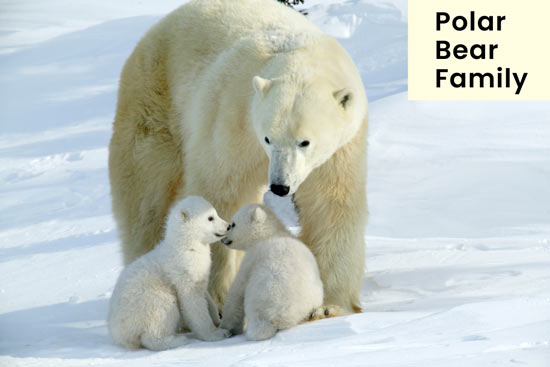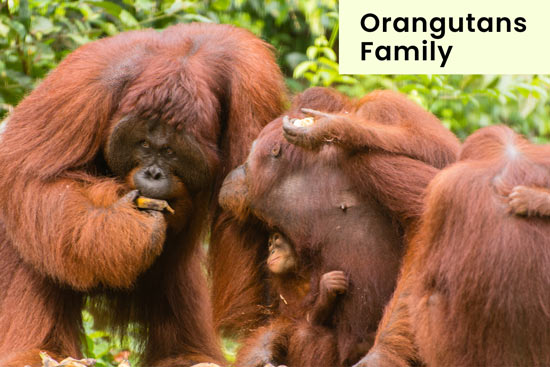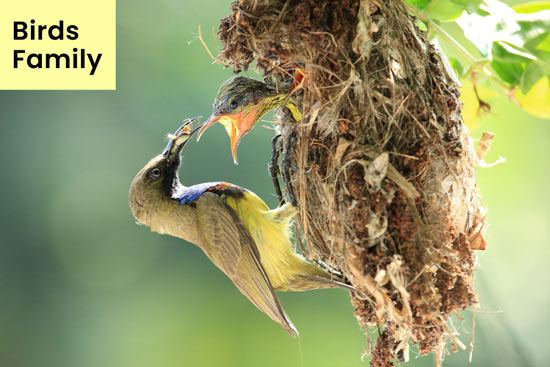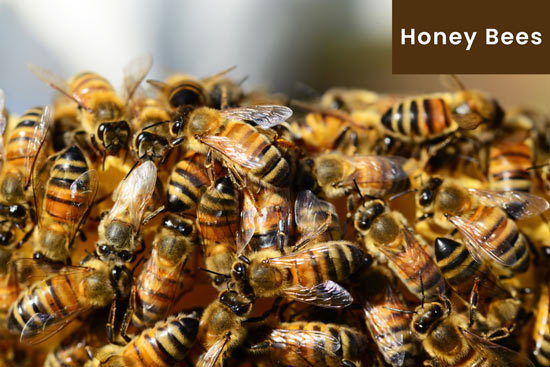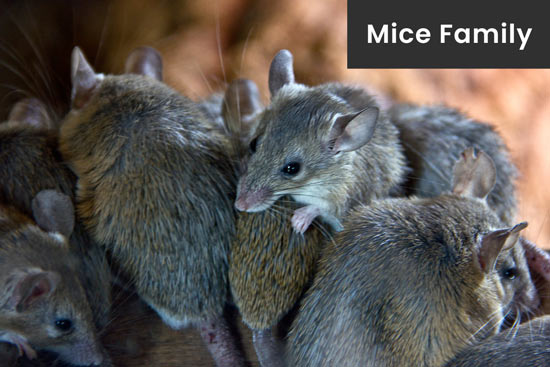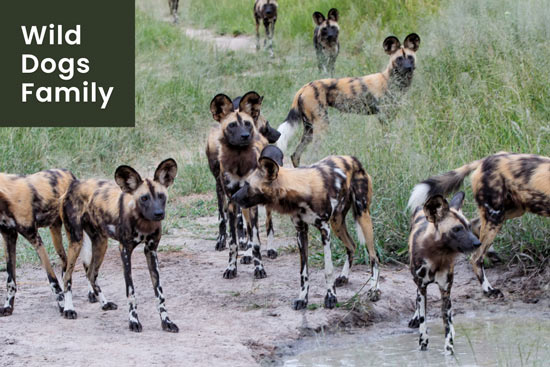17 Animals That Protect Their Family and Young Ones
We often think of animals as being fiercely independent, yet many species have incredibly strong parental instincts that drive them to protect their family and young ones. Despite the differences between various species, all animals share some basic characteristics, such as the ability to move, grow, reproduce, and most importantly, defend their young ones.
Animals are known for having strong instincts to protect their families. This can be seen throughout the world in a wide variety of species that live in different regions. Let’s look at that instinct in this article.
Table of Contents
Why Do Animals Protect Their Young?
Often, it’s confusing why animals defend their families. As humans, we are capable of thinking for ourselves and protecting and providing for our families. But how do animals do that? Let’s take a closer look.
Do Animals Have a Natural Instinct to Protect Their Homes and Families?
After baffling this question for years, people have arrived at possible reasons why animals protect their families. Most believe it is Instinctive. Just like us humans, animal mothers also have the natural maternal instinct to protect their younger ones. Scientists have shown that this is a natural tendency, so it’s not just a fact.
Maternal instincts are present in many animals, and in some cases, these instincts are even stronger than those of humans. It is natural for animals to care for their young and protect them to ensure the survival of their species, and sometimes this instinct can even extend to grief and sadness when their younger ones are lost or threatened.
There are various real-life examples where humankind has witnessed animals displaying their maternal instincts. For example, Orangutan moms stay with their kids for six to seven years after birth and nurture them throughout.
Also Read: Importance of Animals to Humans and Environment.
Do Animals Have Feelings For Each Other?
Coming to the next possible reason, feelings. Some people think that, like humans, animals also have their fair share of emotions and feelings. And this is not a recent assumption.
Pythagoras, a philosopher, and mathematician who lived in ancient times believed that animals have the same range of emotions as humans.
And, Charles Darwin stated that there is no fundamental difference between humans and other mammals in terms of mental abilities.
Dr. Marc Bekoff, a professor and expert on animal rights and conservation, has written about the emotional capacities, cognitive abilities, and moral lives of animals, and has noted that fish, rats, mice, and chickens are all capable of displaying empathy and experiencing both their pain and the pain of others.
It is also noted that people having close interactions with animals are convinced that they are capable of experiencing a variety of feelings and emotions. This further contributes to the evidence that animals have thoughts and emotions.
How Do Animals Protect Their Young?
There are incidents and news around the world about how animals constantly protect their family and offspring. They use many ways depending on the species and the specific threats they face. Some common strategies include:
- Using Physical Force: Some animals, such as mother bears or male lions, will use their size and strength to intimidate or attack any threats to their babies. Mother bears usually protect their young ones from any threat using their size and aggression.
- Hiding The Young: Many animals will try to hide their young from predators by carrying them to a safe location or by hiding them in a nest or den. Examples include bears and foxes. Foxes often dig dens in the ground and use them to give birth and raise their offspring.
- Protecting Numbers: Some species, such as birds, engage in communal nesting, where multiple pairs work together to build a nest and raise their young. The adults will fiercely defend the nest from any perceived threats. Even elephants collectively as a herd raise a bunch of cubs, whilst taking care of them in turns.
- Teaching Survival Skills: Mother animals often teach their young important survival skills, such as how to find food, how to hide from predators, and how to defend themselves. Animals like wolves, teach their young the necessary survival skills that they need to live around.
- Communicating Danger: Many animals have developed vocalizations or other forms of communication that alert their young to potential dangers, such as the presence of predators. Birds, usually communicate danger with some kind of song or sound to their babies, and these babies eventually learn to respond to these sounds.
Also Read: How Do Animals Help Each Other?
Animals That Protect Their Family and Young Ones
Animals that protect their family include elephants, orangutans, orcas, lions, wolves, polar bears, elephants, emperor penguins, dolphins, chimpanzees, bees, birds, mice, kangaroos, hyenas, and cheetahs.
Below you will find a more detailed explanation of the most protective animals in the world.
Chimpanzees
Chimpanzees are highly social animals that live and work together in groups ranging in size from 15 to 150 members. They are omnivorous and are capable of hunting monkeys and other large animals.
A chimpanzee family will band together to defend itself when they are threatened by a rival group or a predator, such as a jaguar.
Dolphins
Yes, dolphins protect their family. Dolphins have a social structure that makes them swim and live together in small groups called pods or herds. After their young ones are born, dolphins take care of them for a while and work together to keep them safe.
When a predator, such as a shark, approaches, the adult dolphins will herd the young calves to the center of the group for maximum protection. They will then work together as a team to threaten and attack the predator, ramming it with their powerful noses. When threatened or attacked, dolphins use their speed and agility to hit predators.
They can also use their intelligence to outsmart predators and use the power of the pod to protect one another. Dolphins are known to be able to kill sharks because they travel in groups, while sharks are solitary predators. Despite their docile appearance, dolphins are highly intelligent and should not be underestimated in their natural habitats.
Elephants
Elephants are known to be highly intelligent animals and are often considered to be one of the smartest animals on earth, along with humans. They are also one of the most protective animals in the world.
They live in herds and rely on strength in numbers to protect themselves. If an elephant herd is nearby when one of their own is in distress, they will quickly come to its aid and can scatter predators by working together. Elephants have also been seen helping out other animals when they see them in trouble.
Elephants, in particular, are also known for their fierce protection of their infants; they form herds of females and children and form a circle around the young ones, keeping them safe from predators.
Otters
Despite their cute appearance, Otters are wild animals with sharp teeth and are capable of taking down large prey, such as alligators or caimans.
Otters are also very protective of their young and will quickly move them to a safe location if they sense danger nearby. The adults will then go after the threat, threatening it and potentially killing and eating it.
Kangaroos
A female kangaroo gives birth to a very small joey after a relatively short pregnancy that lasts between 21 and 38 days. This can range in size from a grain of rice to a bee.
In order to protect their vulnerable babies, they carry them in pouches for months, maintain constant skin-to-skin contact, and allow the baby to gestate for another 120 to 450 days. After about 10 months, the joey permanently emerges from the mother’s pouch but continues to periodically nurse from the mother for another 8 to 11 months.
Wolves
Wolves are social carnivores that live in packs with a specific hierarchical order and each member knows their place in the group.
These tight-knit families have a strong sense of solidarity and will protect each other against rival packs or predators, if necessary. The main threat to a wolf pack is generally another rival pack.
Hyenas
Hyenas live in groups called clans, which can have up to 100 members and have a complex social hierarchy, just like wolves. Hyena clans are believed to be ruled by females, in contrast to many animals that are family-oriented, such as lions.
While hyenas are not particularly large animals individually and typically stick to smaller prey and scavenging, they can overpower large prey and protect their family when working together as a group.
Orcas
Orcas, also called killer whales, are highly protective of their young. They have few natural predators aside from humans and are believed to be the only natural predators of great white sharks.
Orcas have strong family bonds and young ones spend their first few years with their mothers. Also, other females in the same pod will protect and care for each other’s offspring.
Lions
A pride of lions consists of 15-40 individuals. The females are in charge of hunting and bringing in food, while the males are in charge of defending the pride from potential dangers.
Lions are smart and work together in teams to take down large prey and fend off threats from natural enemies, such as African wild dogs, hyenas, jackals, and cheetahs.
Also Read: How Do Lions Adapt to Their Environment?
Emperor Penguin
Penguins tend to be protective of their young ones in every possible way right from their birth. Emperor penguin mothers lay eggs and leave them with their male counterparts, who take care of the thick shell. Mothers then catch fish in the ocean and then return to the hatching site to feed their newly hatched chicks. She keeps the chick warm and safe with the warmth of her brood pouch.
Yes, emperor penguins also protect their family. When faced with a predator such as a leopard seal, the entire group will huddle together tightly and present a unified front, making it difficult for the predator to single out an individual. The emperor penguins will also use their superior swimming speed to escape danger.
Cheetahs
Cheetah mothers, unlike the mothers of most of the animals we’ve studied here, raise their babies of two to six cubs in isolation and relocate their den every four days. It is done to prevent the formation of a smell that predators can sense. The cubs stay with their moms for the first 18 months of their lives, during which they learn to hunt.
To keep their young safe from harm, cheetahs use their incredible speed and agility to outrun predators and defend themselves with their sharp claws and teeth. They also use their intelligence to outsmart predators and use the power of the group to protect their family.
Polar Bears
Polar bears typically give birth to twin cubs who stay together for about 2 years to learn the skills needed to survive in the cold climate. To protect their babies from predators, the mothers dig dens into deep snow drifts.
Polar bears take care of their families by being very protective of their young ones (cubs) and even risking their own lives to protect them. On the ice cover, mothers stay close to their cubs and use their strength to protect them from possible dangers.
Orangutans
Orangutans are also very protective of their young and will use their arms to embrace and protect their offspring from danger. They also use their vocalizations to alert other family members of potential danger and to keep their families together. If a predator does approach, the orangutans often band together to fight off the danger, using their teeth and claws as defensive tools.
Also, in their first two years of life, newborn orangutans rely entirely on their mothers for everything from food to transportation. Mothers also spend an average of six to seven years teaching their young everything they need to know to survive on their own.
Birds
Besides Animals, birds are very protective of their young. They will do anything to keep them safe from harm. When a predator is near, they become enraged, attacking and trying to drive it away.
If one of their chicks is in danger, they will also fight fiercely to defend it. Also, to keep the whole flock safe, they often give warning calls to make other birds aware of the danger.
Also Read: Why Are Birds Important to the Environment?
Bees
Honeybees have elaborated social structures called colonies, and each colony can have thousands of members under the leadership of a single queen.
When an intruder is detected, the worker bees, which are the only bees capable of stinging, will attack. When they sting, part of their abdomen is torn out when the stinger gets stuck in the victim, causing them to die.
Also Read: Why Are Bees Important to The Environment?
Mice
In addition to animals, rodents like mice have maternal instincts, just like humans. In order to protect their babies, mothers grab wandering newborns. Then, to calm the babies, they pick them up by the scruff of their necks.
According to research, mouse females have tricks for enticing their absent fathers to care for their offspring. To convince males to participate, mothers use ultrasonic vocalizations and odor cues. Mother rats aggressively defend their baby rats and territories as part of their maternal behavior.
Wild Dogs
It is well known that wild dogs are loyal and protective of their family members. Even if it means sacrificing their own lives, they will do whatever it takes to protect their loved ones.
In the wild, these dogs often form tight-knit packs that work together to defend themselves against predators and other threats. Whenever one of the pack members is in danger, the others will come to its aid. Even if they are not related by blood, wild dogs will care for other members of their group. Loyalty runs deep in their hearts.
Conclusion
It is truly remarkable to witness the lengths animals will extend in order to protect their family and young ones. From lions protecting a vulnerable cub, or birds raising their chicks while warning predators of danger – all animals have an immense capacity for love and protection that can be seen across different species. They deserve our respect and we should preserve their habitats and treat them with kindness. At the end of the day, who doesn’t appreciate it when a parent stands up for their children? After all, everyone wants their loved ones to feel safe – including animals.
